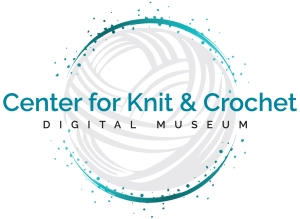Dating Steel Crochet Needles and Hooks
As my crochet hook collection grew over the years, I began grouping my hooks first by material the hook is made from (not the handle) and then by style. Most of the more ornate and delicate styles are steel needles or hooks used for thread work and are no longer made. I wondered if I could date them. I eventually found four sources of information useful in dating hooks: patents/registered designs, materials technology, company documents and packaging.
Patents and registered designs are the most accurate way to date crochet hooks. Either can date the first release of a hook. Patents are usually for innovations in technology such as US patent 572809 by Kippenberg in 1896 for the flat (grip, thumb rest) found on most hooks today. British registered designs or US design patents are usually for a decorative element such as the handle like the diamond mark, US design patent D52973, on the grip of the Peerless Novelty Company hooks.
Materials technology covers the methods of working steel to form a crochet hook. The goal is to make a hook better, faster and cheaper. Steel for the earliest hooks was made in small batches and the hooks were fashioned the same as sewing needles. Later innovations allowed steel to be made in large batches and later still to have the steel formed by stamping machines. Materials technology gives a broader date range as it took time for the industry as a whole to switch from one technology to another. A new company might have to be formed or an established company might have to retool before a new technology would be incorporated.
Major milestones in materials technology for crochet hooks included the changes from small batch steel to large batch steel (Bessemer process patented in 1856) seen in the shift from needles in separate handles to one piece hooks, improvements in tool steel that allowed rods to be stamped into hooks instead of hooks being cut into the rod and decorations worked by lathe turning, and the switch from stamping to swagging. A summary of the materials technology in table format is shown in this link. Associated technologies can also be used to date crochet hooks such as offset lithography on tinplate, usually associated with tin toys, used for crochet hook covers.
Company documents such as advertisements, wholesale catalogs, incorporations, mergers and even litigation over trademarks can provide information on the age of a hook or the length of time a particular hook was manufactured. Advertisements and wholesale catalogs usually only give spot data on when a hook was in production but don’t address when it was first or last made. Legal documents such as articles of incorporation and mergers may put outer limits on the dates a hook was made. British crochet hook manufacturers in the early 1800s were cottage industries. These small manufacturers and their brands might cease to exist after a generation or two or might be consolidated into larger companies such as Milward with logos and brand names being used by the purchasing company. Legal documents can date these events.
Packaging can sometimes by useful in dating crochet hooks especially modern hooks. Boxes holding a dozen hooks were used from about 1900 into the 1960s. In the 1960s C. J. Bates changed to individual blister packages for needlework tools and won several awards in the packaging industry. Most large companies followed suit. Changes in the packaging such as price, whether there is a zip code (see image of package without zip code), and changes in logos and trademarks can all help with dating. For the Clipson hook shown, the Clipson trademark was registered in December 1949 and zip codes were created in 1963 so this packaging is from between 1950 and 1963.
Cataloging and dating crochet hooks is an ongoing project of mine. You can follow my progress on my website Lace Buttons under the heading
Crochet Hooks. Both general articles on crochet hooks and descriptions of individual hooks are in progress. If you have additional information on any crochet hooks and are willing to share, I would appreciate it.
Nancy Nehring, CKC Guest Blogger



